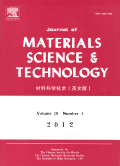
Journal of Materials Science & Technology
Scope & Guideline
Advancing Innovation in Materials Science
Introduction
Aims and Scopes
- Materials Synthesis and Processing Techniques:
The journal publishes research on various synthesis methods, including additive manufacturing, powder metallurgy, and advanced coating techniques, aimed at improving material properties and performance. - Nanostructured and Composite Materials:
Research on the development and characterization of nanostructured materials and composites, focusing on their mechanical, electrical, and thermal properties, is a core area of interest. - Material Characterization and Testing:
Articles often detail advanced techniques for characterizing the microstructure and properties of materials, including mechanical testing, thermal analysis, and electron microscopy. - Functional Materials for Energy Applications:
The journal highlights innovations in materials designed for energy applications, such as catalysts, batteries, and photovoltaic cells, targeting efficiency and sustainability. - Biomaterials and Medical Applications:
Research related to biomaterials, including their design, synthesis, and applications in medical devices and tissue engineering, is a significant focus area. - Corrosion and Environmental Effects:
Studies addressing the corrosion mechanisms, prevention strategies, and performance of materials in various environments are essential contributions to the journal. - Smart Materials and Structures:
The journal encourages research on smart materials that respond dynamically to external stimuli, including shape memory alloys and piezoelectric materials.
Trending and Emerging
- High-Entropy Alloys (HEAs):
There is a significant increase in research on high-entropy alloys, which are recognized for their superior mechanical properties and thermal stability, making them attractive for various applications. - Sustainable and Green Materials:
Research focusing on sustainable materials, including biodegradable polymers and eco-friendly composites, is gaining momentum as industries seek greener alternatives. - Advanced Coatings and Surface Engineering:
The trend towards developing multifunctional coatings for applications in corrosion resistance, wear protection, and bioactivity is increasingly prevalent. - Smart and Adaptive Materials:
Emerging research on materials that can change their properties in response to environmental stimuli, such as temperature or pH, is becoming a focal area, particularly in medical and sensor applications. - Machine Learning in Materials Design:
Utilization of machine learning and artificial intelligence to predict material properties and guide the design process is an emerging theme that is gaining traction in the field. - 3D Printing and Additive Manufacturing:
The rise of additive manufacturing technologies is reflected in increasing publications regarding the design, optimization, and application of 3D-printed materials. - Nanotechnology and Nano-architectured Materials:
Research on nanostructured materials, including their synthesis, characterization, and applications in various fields, remains a rapidly growing area of interest.
Declining or Waning
- Traditional Metal Alloys:
Research specifically focused on conventional metal alloys has become less prominent, likely due to the increasing interest in high-entropy alloys and advanced composites that offer superior properties. - Basic Alloy Design without Functionalization:
Studies centered on basic alloy systems without significant functionalization or modification are seeing reduced attention, as the field moves towards more complex, multi-functional materials. - Single-Phase Material Studies:
Investigations solely focused on single-phase materials are declining, with a shift towards multi-phase systems that exhibit enhanced mechanical and functional properties. - Static Corrosion Studies:
While corrosion remains a critical topic, static studies that do not consider dynamic or environmental factors are becoming less favored in favor of more comprehensive, real-world assessments. - Conventional Ceramics:
Research on traditional ceramics has waned, as interest shifts towards advanced ceramic composites and hybrid materials that exhibit enhanced properties and functionalities.
Similar Journals

Advanced Powder Materials
Elevating Standards in Powder Material ResearchAdvanced Powder Materials, published by KEAI PUBLISHING LTD, stands at the forefront of research in materials science, particularly focusing on the intricate relationships within powder materials and their applications across several domains including catalysis, ceramics, energy, and coatings. With an Open Access policy initiated in 2022, this journal ensures that cutting-edge findings are readily accessible to researchers, professionals, and students globally. Based in Beijing, China, the journal has gained recognition for its exceptional impact, achieving a prestigious Q1 ranking in multiple categories such as Catalysis, Ceramics and Composites, and Materials Science. The journal not only promotes innovative research but also serves as a vital platform for interdisciplinary collaboration, significantly impacting the fields it covers, which also include notable rankings in Metals and Alloys and Surfaces, Coatings, and Films. By fostering an environment of knowledge sharing, Advanced Powder Materials is poised to make substantial contributions to the scientific community over its converged years from 2022 to 2024.

JOURNAL OF MATERIALS SCIENCE
Pioneering Research for Tomorrow's MaterialsJOURNAL OF MATERIALS SCIENCE, published by SPRINGER, stands as a highly regarded periodical in the field of materials science, delivering impactful research since its inception in 1966. With an impressive Q1 ranking in both Mechanical Engineering and Mechanics of Materials, alongside strong Q2 positions in Ceramics, Composites, and General Materials Science, this journal serves as a pivotal resource for scholars and practitioners alike. It offers insightful contributions that span a diverse range of topics, from emerging materials to advanced applications in engineering. With a robust Scopus ranking reflecting its global influence—ranking 91 out of 672 in Mechanical Engineering and 63 out of 398 in Mechanics of Materials—the JOURNAL OF MATERIALS SCIENCE maintains an essential role in advancing the understanding and innovation within the discipline. Researchers, professionals, and students are encouraged to access this esteemed journal to keep abreast of groundbreaking findings and methodologies that shape the future of materials science.
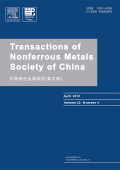
TRANSACTIONS OF NONFERROUS METALS SOCIETY OF CHINA
Elevating the discourse on materials chemistry and engineering geology.TRANSACTIONS OF NONFERROUS METALS SOCIETY OF CHINA, published by Elsevier, is a premier academic journal that serves as a vital platform for researchers and professionals specializing in materials science, condensed matter physics, geotechnical engineering, and engineering geology. Established in 1994, this esteemed publication has maintained a robust focus on the latest developments in the nonferrous metals sector, reflecting its significant impact in the field with a Q1 categorization across multiple disciplines. With impressive Scopus rankings—placing it in the top 20% of journals in relevant categories—this journal is recognized for its quality and rigor, providing critical insights into metals and alloys, materials chemistry, and their applications. The non-open access format ensures a dedicated readership among professionals and academics seeking substantial and authoritative research articles. By fostering knowledge exchange, the journal strives to advance the understanding and application of nonferrous metals, making it an essential resource for anyone involved in material innovations and engineering solutions.

ACS Materials Au
Transforming Ideas into Materials BreakthroughsACS Materials Au, published by the American Chemical Society, is a premier open-access journal that has been at the forefront of materials science since its inception in 2021. With an ISSN of 2694-2461, this journal encompasses an expansive range of topics including biomaterials, electronic, optical and magnetic materials, materials chemistry, and polymers and plastics, consistently achieving Q1 rankings in these categories for 2023. The journal is based in the United States and operates from the AMS's headquarters in Washington, DC, offering significant visibility and a robust platform for researchers. The journal's commitment to open access ensures wide dissemination of groundbreaking research, enabling a diverse audience—including researchers, professionals, and students—to engage with the latest advancements in materials science. With an encouraging impact factor and a focus on novel materials and innovative applications, ACS Materials Au stands as a vital resource for anyone devoted to understanding and advancing the frontiers of materials engineering and science.
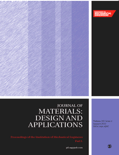
PROCEEDINGS OF THE INSTITUTION OF MECHANICAL ENGINEERS PART L-JOURNAL OF MATERIALS-DESIGN AND APPLICATIONS
Elevating Standards in Mechanical Engineering ResearchPROCEEDINGS OF THE INSTITUTION OF MECHANICAL ENGINEERS PART L-JOURNAL OF MATERIALS-DESIGN AND APPLICATIONS is a prestigious academic journal published by SAGE PUBLICATIONS LTD, focusing on the dynamic fields of mechanical engineering and materials science. With an impressive impact factor reflective of its rigorous scholarly contributions, this journal serves as a vital platform for the dissemination of innovative research and practical applications in materials design and engineering processes. Since its inception in 1999 and continuing through 2024, it has maintained a robust reputation, achieving a Q2 ranking in both Materials Science (miscellaneous) and Mechanical Engineering categories, as well as commendable Scopus ranks that place it in the top percentiles of its fields. Located in the United Kingdom, the journal encourages submissions from researchers and professionals who are seeking to advance their understanding of materials applications while fostering interdisciplinary collaboration. Although it currently operates under traditional access terms, the journal prioritizes impactful research that addresses contemporary challenges in design and manufacturing, ensuring that it remains a must-read for anyone invested in the innovations shaping our technological landscape.

POWDER METALLURGY AND METAL CERAMICS
Elevating the Standards of Metal Ceramics ScholarshipPOWDER METALLURGY AND METAL CERAMICS is a prestigious journal published by Springer, dedicated to advancing the field of powder metallurgy and the development of metal ceramics. With an ISSN of 1068-1302 and an E-ISSN of 1573-9066, this journal includes significant research contributions that explore innovative developments in materials science and engineering. Since its inception in 1993, it has garnered attention within multiple disciplines, consistently ranking in the Q2 and Q3 quartiles across categories such as Metals and Alloys, Ceramics and Composites, and Mechanics of Materials. The journal offers valuable insights into the synthesis, characterization, and applications of advanced materials, making it an essential platform for researchers, professionals, and students aiming to stay at the forefront of technological advancements in this dynamic field. Although not currently offering open access, the journal remains a critical resource for disseminating high-quality research that influences both academia and industry.

Inorganic Materials-Applied Research
Transforming Materials Science with Inorganic DiscoveriesInorganic Materials-Applied Research is a pivotal journal dedicated to the dissemination of innovative research in the field of inorganic materials. Published by SpringerNature, this journal operates as a vital resource for researchers, professionals, and students alike, providing a platform for cutting-edge findings and methodologies related to the synthesis, characterization, and application of inorganic materials. With an ISSN of 2075-1133 and an E-ISSN of 2075-115X, the journal strives to bridge gaps in interdisciplinary studies, fostering collaboration across the engineering and materials science domains. Despite its current rankings placing it in the Q3 quartile for both Engineering and Materials Science categories, the journal aims for broader impact, seeking to enhance its visibility and contribution in publications through rigorous peer-review and open access options. Converged from 2010 to 2024, it remains committed to advancing knowledge and addressing contemporary challenges in materials science, thereby attracting contributions that are not only academically rigorous but also socially impactful.
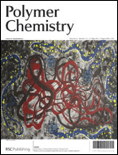
Polymer Chemistry
Pioneering Research for a Sustainable FuturePolymer Chemistry is a premier peer-reviewed journal published by the Royal Society of Chemistry, focusing on cutting-edge research and developments in the field of polymer science. With its ISSN 1759-9954 and E-ISSN 1759-9962, this journal has established a significant impact within the academic community, as evidenced by its impressive Q1 ranking in areas such as Biomedical Engineering, Organic Chemistry, and Polymers and Plastics. Over its convergence period from 2010 to 2024, Polymer Chemistry has become an essential resource for researchers, professionals, and students, showcasing innovative studies that advance the understanding of polymer behavior and applications. The journal does not currently offer open access, allowing for a traditional but rigorous peer-review process ensuring high-quality publications. For those engaged in the rapidly evolving disciplines of biochemistry and bioengineering, Polymer Chemistry serves as a vital platform for disseminating influential findings and fostering interdisciplinary collaboration in a global context.
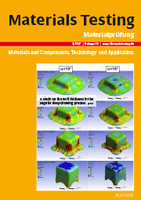
Materials Testing
Empowering Research in Mechanics of MaterialsMaterials Testing is a renowned journal published by Walter de Gruyter GmbH, serving the global scientific community in the fields of Materials Science, Mechanical Engineering, and Mechanics of Materials. With an ISSN of 0025-5300 and an E-ISSN of 2195-8572, this journal has been a significant contributor to the discourse on material performance, testing methodologies, and engineering innovations since its inception. The journal is recognized for its rigorous peer-review process and holds a commendable Q2 quartile ranking in multiple categories for 2023, showcasing its impact and relevance in the field. With open access options available, Materials Testing aims to disseminate valuable research findings and practical insights that drive advancements in technology and materials applications. By addressing the latest challenges and developments within the field, this publication serves as an essential resource for researchers, professionals, and students alike, fostering a deeper understanding of material properties and testing techniques.
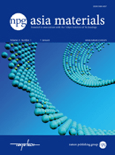
NPG Asia Materials
Navigating the Future of Materials with Expert PerspectivesNPG Asia Materials, a premier journal published by NATURE PORTFOLIO, stands at the forefront of research in the fields of condensed matter physics, materials science, and modeling and simulation. With an impressive Impact Factor gracing its Q1 rankings in 2023, this open-access journal, established in 2012, offers a vital platform for disseminating high-quality research articles, reviews, and perspectives that advance the understanding of material properties and innovative applications. Based in the United States and catering to a global audience, NPG Asia Materials features cutting-edge contributions that not only enhance academic scholarship but also provoke discussions relevant to both industry and academia. Researchers, professionals, and students are invited to explore its extensive archive of work, covering insights from 2009 to 2024, in a bid to stay abreast of the latest developments in these rapidly evolving scientific domains.